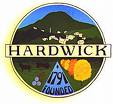Two months ago, the New York Times ran a major spread about an economic renaissance in our neighboring town of Hardwick, Vermont. The upbeat story highlighted a group of fledgling, food-related companies that have aligned themselves in building a sustainable local economy.
In an article a few weeks earlier, the Times had reported that in the first six months of 2008, 30 countries had seen food riots in the face of dwindling supplies and soaring costs.
These two stories-worlds apart in all obvious respects but they can be linked in at least one way: the cooperative, local-foods model of the Hardwick entrepreneurs points in a direction that could help ease food shortages in Haiti, Indonesia, Mauritania, and myriad other hungry places around the world.
The basic model consists of small-scale, locally based businesses cooperating intensively with each other to mutual advantage in a competitive marketplace.
Here’s how it works in Hardwick, Vermont:
Brothers Andy and Mateo Kehler make prize-winning organic cheeses at nearby Jasper Hill Farm. Their whey byproduct is a key ingredient in a new, nontoxic wood finish manufactured by Vermont Natural Coatings, a company owned by their friend, Andrew Meyers. Vermont Soy, co-located with the wood-finish company, makes drinks and tofu from soybeans developed by High Mowing organic seed company owned by a neighbor, Tom Stearns.
Pete Johnson of Pete’s Greens also plants those seeds in his company’s greenhouses, and he uses High Mowing’s byproducts – squash and pumpkins from which the seeds have been extracted – to manufacture soup. Meanwhile, Claire’s, a popular community-owned restaurant, features Jasper Hill cheese, but also sources much of its salad greens, soup, and other foods from Pete’s Greens and neighboring farms. Several other complementary businesses add to the ferment, including, naturally enough, a composting facility.
Clean Yield played prominently in the Times’ article, because some of our social-investor clients are making investments in the businesses.
Hardwick’s cooperative business arrangement has garnered so much interest that the key actors recently started the Center for an Agricultural Economy in a storefront next door to Claire’s. The Center focuses on sustainable agriculture education, while it promotes a community garden, a year-round farmers’ market, and rentable commercial kitchen space for small-scale producers.
How might this Hardwick model address the dramatic rise in world hunger? First, let’s acknowledge that a family without food, here or abroad, is the tragic result of an enormously complex web of factors, with no silver-bullet solution.
Then, we need to debunk the myth that inadequate food production is the nub of the problem-inequitable distribution is. (World grain harvests in 2007 were the most abundant in the planet’s history.) And even if the U.S. and other developed nations hadn’t flagrantly reneged on much of their promised food aid this year, hunger would still be spiking in much of the Third World and even in many parts of the industrial North.
Food shortages aren’t inevitable, but the list of contributory factors is long and seemingly intractable: war and endemic conflicts; rising consumption in China and India; extreme weather (some probably related to climate change), including the protracted drought in Australia.
Of all the causes of world hunger, rich country policies are among the most destructive. Notwithstanding so-called free-trade agreements, subsidies for growing grain in exporting nations are estimated to total almost $1 billion per day. Ethanol-fuel subsidies are siphoning off vast quantities of edible grain from the world’s stores. Other subsidies result in surplus food that is sold or donated to needy nations in a way that undercuts the ability of native farmers to make a living.
The patenting of genetically engineered crops has created a host of severe problems, including seed costs that are beyond the reach of small-scale farmers, heightened vulnerability to disease due to mono-cropping, increased reliance on high-cost pesticides, the emergence of herbicide-resistant weeds, and a tilt toward capital- versus labor-intensive cultivation practices.
The Hardwick model, by contrast, emphasizes crop diversity, joint marketing and transportation, less chemical additives, healthier soils, minimal waste, etc.
The goal is long-term social, as well as environmental and economic, sustainability. Employed worldwide, but interpreted locally, the model could not only help address hunger but lessen joblessness and ease such problems as the exodus of rural populations to overcrowded cities.
Where do social investors fit in? Some are directly helping capitalize small, sustainably oriented ventures like those in Hardwick. Some are focusing on hungry regions like Africa, financing micro-businesses or small enterprises in, say, village-level energy generation. A few are sponsoring shareholder resolutions that raise public companies’ awareness of the downside of genetically engineered foods. Many are lending their voices to combat climate change through alliances, such as the Carbon Disclosure Project and the Investor Network on Climate Risk. Many more are avoiding investing in Monsanto and the handful of other companies that market genetically engineered seeds.
++++
Reprinted with permission from The Clean Yield, a newsletter published by the Clean Yield Group, a socially responsible portfolio management group.
